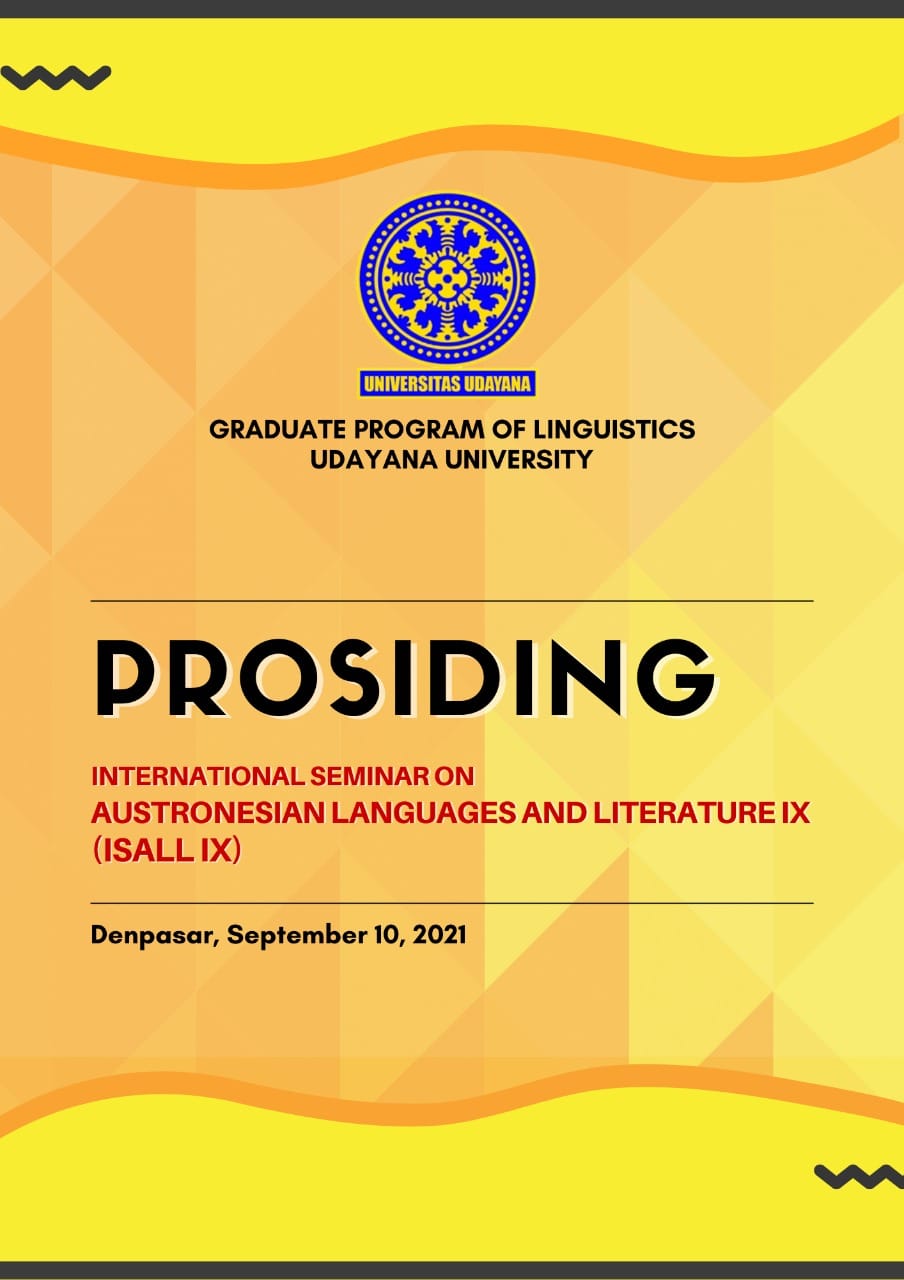Equivalence Variations on Bilingual Mobile Phone Setting
Abstract
This paper discusses equivalence on bilingual mobile phone setting. Nowadays, mobile phone has been set up to have various language choices based on its customers. The language choices are aimed to ease the customer to use its mobile phone. Almost all mobile phone factories are applied various languages choices in its mobile phone setting. However, for almost all customers, it is easily to access the setting of mobile phone in English. The familiarity of terms or commands in English are the basic reasons that customers are aware in using English rather their own language. Sometimes, the information sounds weird or irrational in using its own language. It is the reasons that certain terms or commands are not found in other languages. This can also be found in Indonesian language for mobile phone setting. The phenomena of equivalence is considered to be important besides the meaning itself. The equivalence enables customers to recognize the information or commands in the setting of mobile phone. Data source of this paper was taken from the bilingual setting of mobile phone. The product of mobile phone is oppo. The data was words and phrases in bilingual of mobile phone setting. Method of documentation is carried out to collect the data with some supporting techniques namely picture screen shoot for both English and Indonesian versions, reading attentively, note taking, and qualifying the selected data. Descriptive qualitative method is applied to describe the selected data based on the theory of equivalence. Findings show that words and phrase are commonly modified to adjust with Indonesian structure. The modification of equivalence for Indonesian and English setting on mobile phones are full equivalence and partial equivalence. The full equivalence is information of mobile phone setting that maintains the source language (SL) in terms of form and structure. While partial equivalence refers mostly to target language (TL) form and structure. In this partial equivalence, there are partial modification to TL structure or meaning and full modification that refers to adaptation of TL structure or meaning.
References
Nykyri, Susanna. (2010). Equivalence and Translation Strategies in Multilingual Thesaurus Construction. ABO Academy University Press, Finland.
Odero, Dr. Erick Omondi. (2017). Problems of Finding Linguistic Equivalence When Translating & Interpreting for Special Purposes. International Journal of Academic Research in Business and Social Sciences, Vo. 7, No. 7, page 388 – 400.
Pertiwi, Putu Mas. (2018). Balinese Folktales and Their Translation Equivalence with Reference to Rare Angon. Jurnal Humanis Fakultas Ilmu Budaya Unud, Vol. 22, 2 Mei 2018: 276 – 280.
Simon, S., A. Dejika-Cartis, C.E. Stoian, A. Kriston. 2018. Types of Equivalence Used in Translating Educational Terminology. Proceedings of ICERI2018 Conference, page 1324 – 1332. Seville, Spain, 12 – 14 November 2018.


